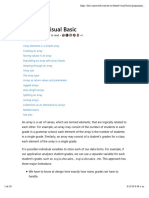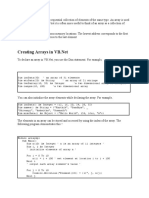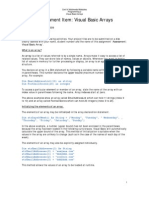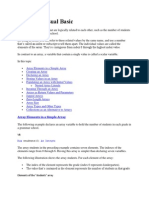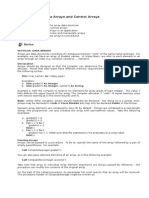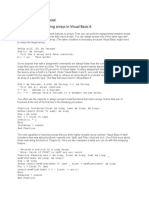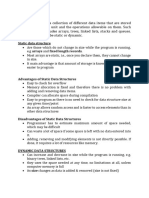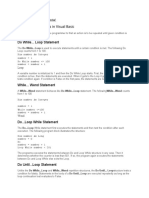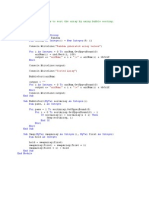0% found this document useful (0 votes)
41 views2 pagesArrays in VB
The document provides a tutorial on creating and accessing arrays in Visual Basic (VB), including examples for both integer and string arrays. It demonstrates how to initialize an integer array with five elements and access them using a loop, as well as how to create and access a string array. The code can be run in an IDE or online compiler to visualize the array operations.
Uploaded by
faithndlovu489Copyright
© © All Rights Reserved
We take content rights seriously. If you suspect this is your content, claim it here.
Available Formats
Download as DOCX, PDF, TXT or read online on Scribd
0% found this document useful (0 votes)
41 views2 pagesArrays in VB
The document provides a tutorial on creating and accessing arrays in Visual Basic (VB), including examples for both integer and string arrays. It demonstrates how to initialize an integer array with five elements and access them using a loop, as well as how to create and access a string array. The code can be run in an IDE or online compiler to visualize the array operations.
Uploaded by
faithndlovu489Copyright
© © All Rights Reserved
We take content rights seriously. If you suspect this is your content, claim it here.
Available Formats
Download as DOCX, PDF, TXT or read online on Scribd
/ 2

